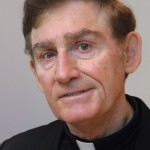A blistering appeal for church reform by Swiss Abbot Martin Werlen has Europeans excited.
“The situation of the church is dramatic,” he said in a homily on the 50th anniversary of the beginning of the Second Vatican Council last October. “The real problem is not a problem of numbers. What is missing is the fire. We must face the situation and find out what is behind it.”
With dwindling numbers of men and women joining the religious life and irregular church attendance, the church, he said, is crawling “with the hand brake on.”
What does Abbot Werlen prescribe to change this state of affairs? Among other things, we need to increase our courage, vision and creativity, he says.
[hotblock]
In his writings, theologian Father Romano Guardini said, “Courage is the confidence required for living with a view to the future, for acting, building, assuming responsibilities and forming ties. For, in spite of our precautions, the future is in each case the unknown. But living means advancing into this unknown region, which may lie before us like a chaos into which we must venture.”
In encouraging us to employ our powers of resourcefulness, Father Guardini echoes Blessed Teresa of Kolkata, who counseled, “Do not wait for leaders; do it alone, person to person.”
Courage does not imply ignoring church authorities. Rather, it implores us to employ our entrepreneurial spirit and to enkindle the spirit of the Second Vatican Council in which Jesuit theologian Father John Courtney Murray observed, “A lot of things came unstuck, old patterns of thought, behavior and feeling.”
Where is the fire of Catholicism to be found?
With society and the media becoming increasingly secular, violent and materialistic, how is the church countering this? What are we doing to educate ourselves about the singular virtues our society needs to maintain postmodern godliness? Who is identifying effective creativity in our churches and spreading the word about it? Where are the playwrights, poets and journalists with the power to change these old patterns of thought, behavior and feelings?
Every year in Washington, D.C., young students are invited to the National Mall to build homes that display creativity in conserving energy. The United States Botanical Garden displays rain gardens and rain buckets that demonstrate their ecological importance.
We can learn from these two examples of creativity, vision and breaking out into the unknown that provide inspiration.
If we are to enkindle the fire of which Abbot Werlen speaks, the “hand brake” must be released. Old thinking and behavior must be replaced with courage, creativity and visioning.
PREVIOUS: Letting go and finding contentment in 2013
NEXT: Catholic answers for a reborn Christian; and placing the creche in a church




Share this story